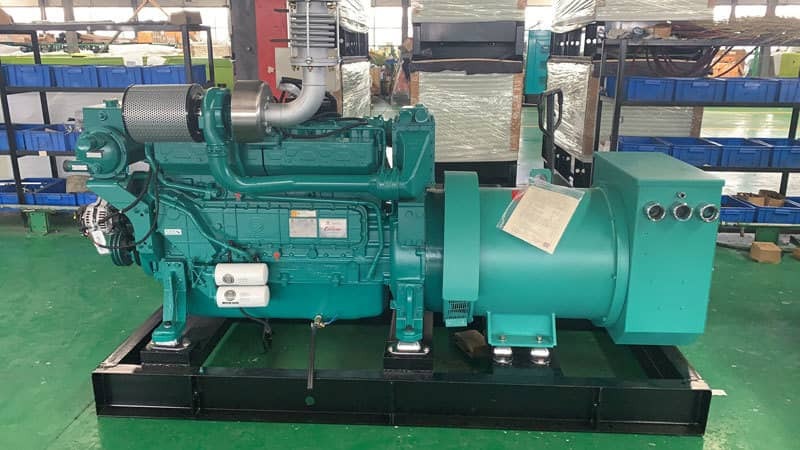A marine generator set, often referred to simply as a marine genset. It is a crucial piece of equipment onboard ships and other marine vessels. It provides electrical power to the various systems and appliances when the main engines are not running or when additional power is required. These generator sets are specially designed and engineered to withstand the harsh marine environment, including high levels of vibration, saltwater exposure, and fluctuating loads.

Engine:
The heart of the marine generator set is its internal combustion engine. These engines are typically diesel-powered due to their reliability, efficiency, and ability to run on readily available marine diesel fuel. The engine drives the generator to produce electricity. Marine engines are specially designed to meet stringent maritime regulations. They are compact and lightweight while still delivering high power output.
Generator:
The generator converts mechanical energy from the engine into electrical energy. It consists of a rotor (connected to the engine) and a stator (stationary part). As the rotor spins within the stator’s magnetic field, it induces an electrical current in the stator windings, producing electricity. Marine generators are designed to withstand the corrosive effects of saltwater and to operate reliably under varying loads.
Cooling System:
To prevent the engine and generator from overheating, marine generator sets are equipped with a robust cooling system. Seawater or a separate freshwater circuit is used to cool the engine’s heat exchangers, cylinder blocks, and other critical components. Heat exchangers transfer heat from the engine coolant to seawater, which is then discharged back into the ocean.
Fuel System:
Marine generator sets have fuel systems optimized for marine applications. They typically include fuel tanks, fuel filters, fuel pumps, and fuel injectors. These systems ensure a steady supply of clean fuel to the engine, minimizing the risk of fuel contamination and engine malfunction.
Exhaust System:
The exhaust system of a marine generator set is designed to safely expel exhaust gases generated during combustion. It typically includes a muffler or silencer to reduce noise levels, as well as exhaust pipes and fittings to direct the exhaust gases away from sensitive areas of the vessel.
Control System:
Modern marine generator sets are equipped with sophisticated control systems that monitor and regulate various parameters such as engine speed, temperature, pressure, and electrical output. These systems ensure optimal performance, protect the equipment from damage, and provide diagnostic information to the crew.
Mounting System:
Marine generator sets are often mounted on resilient mounts or shock-absorbing bases to reduce vibration and noise transmission to the vessel’s structure. This helps improve overall comfort for passengers and crew and minimizes the risk of damage to the generator set and other onboard equipment.
Safety Features:
Marine generator sets incorporate various safety features to protect against potential hazards such as over-speed, over-temperature, low oil pressure, and electrical faults. Automatic shutdown systems are commonly included to prevent catastrophic failures and ensure the safety of the vessel and its occupants.
Overall, marine generator sets play a critical role in providing electrical power for propulsion, navigation, communication, lighting, HVAC systems, refrigeration, and other essential onboard systems. Their robust design, reliability, and ability to operate in challenging marine environments make them indispensable for modern maritime operations.
